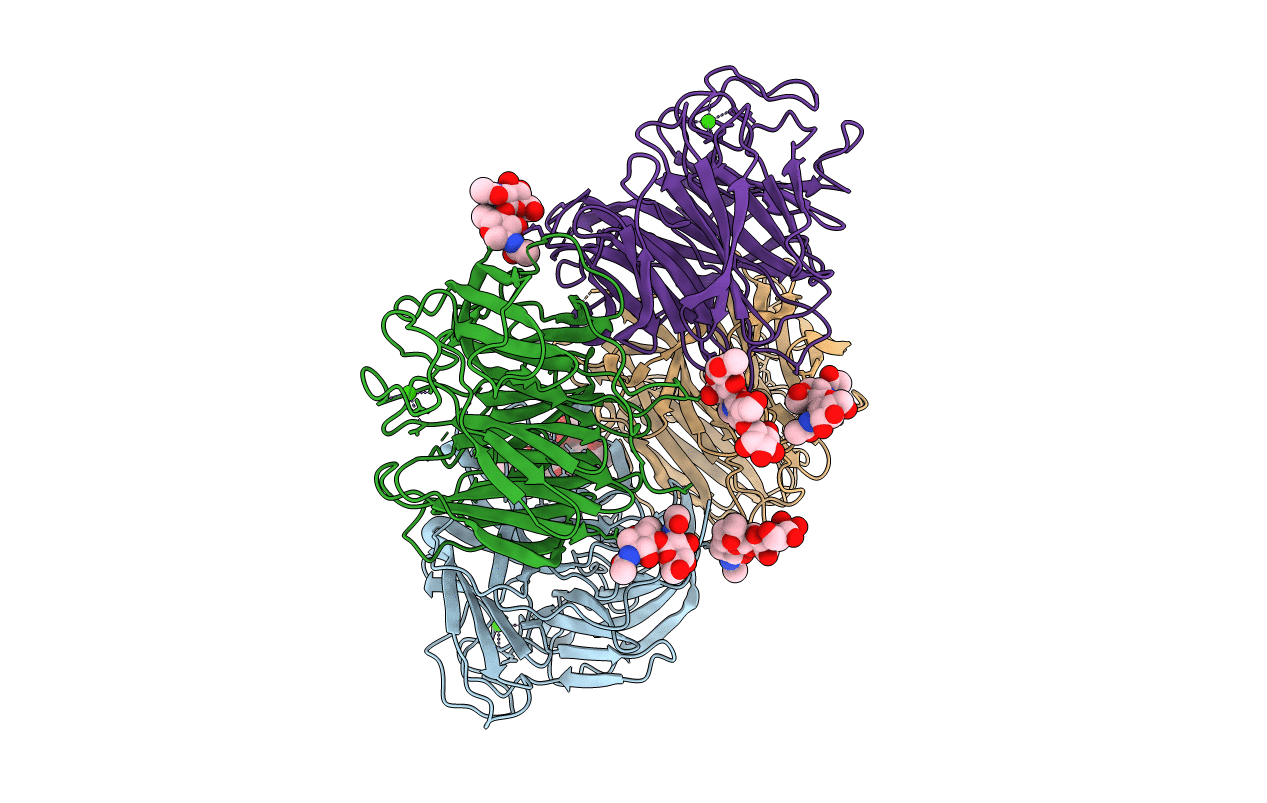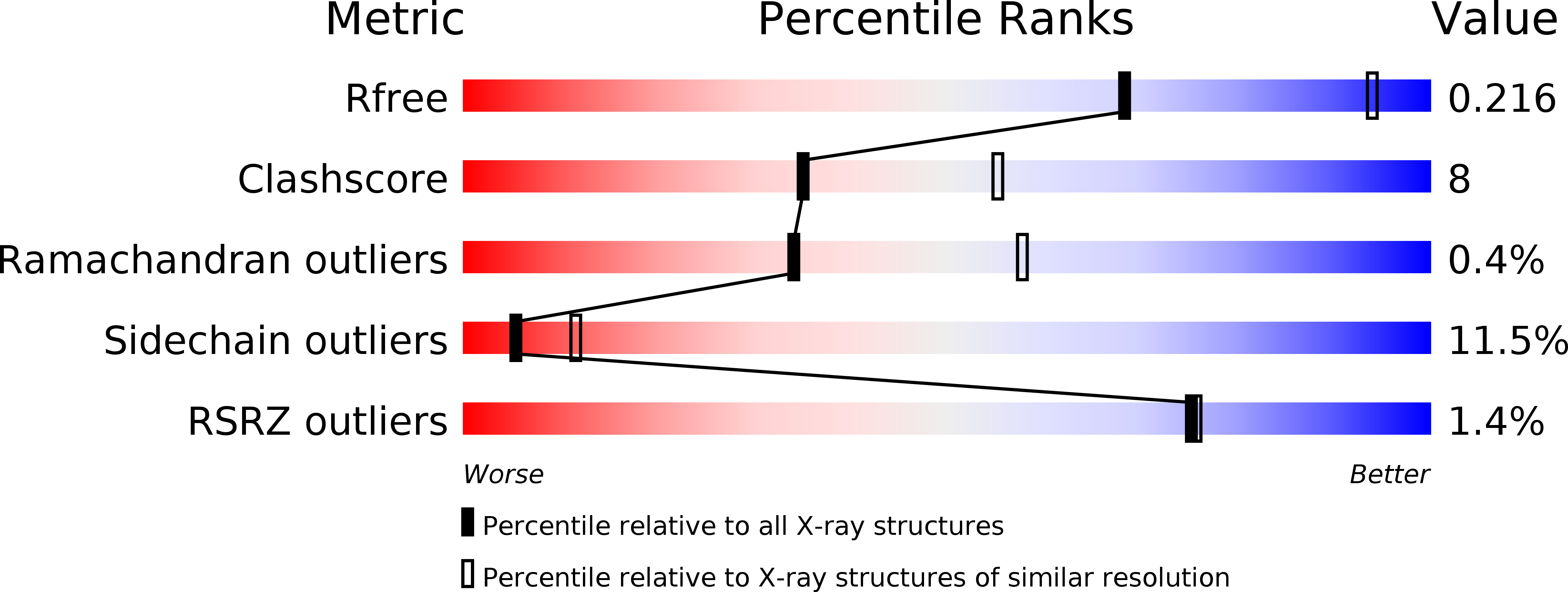
Deposition Date
2013-04-11
Release Date
2013-10-23
Last Version Date
2024-11-06
Entry Detail
PDB ID:
4K3Y
Keywords:
Title:
Crystal structure of a subtype N11 neuraminidase-like protein of A/flat-faced bat/Peru/033/2010 (H18N11)
Biological Source:
Source Organism:
Influenza A virus (Taxon ID: 11320)
Host Organism:
Method Details:
Experimental Method:
Resolution:
2.68 Å
R-Value Free:
0.21
R-Value Work:
0.17
R-Value Observed:
0.18
Space Group:
P 61


